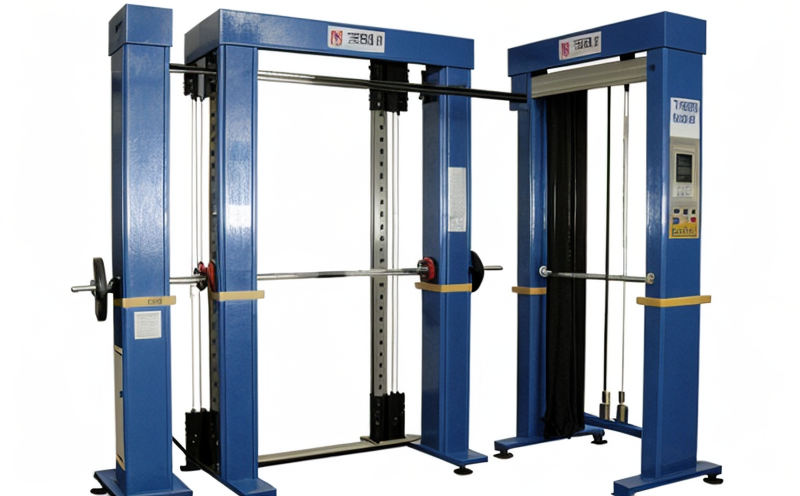GB T 4669 Determination of mass per unit area of fabrics
The determination of the mass per unit area (g/m²) in fabrics is crucial for understanding their physical properties and ensuring compliance with various international standards. The method described in GB/T 4669-2012, "Determination of mass per unit area of fabrics," provides a standardized approach to measure the weight of fabric samples, which is an essential parameter in quality control and product development.
This test ensures that all products meet specified performance criteria. It also supports compliance with international standards such as ISO 13934:2016 and ASTM D3776-18, which are widely recognized for their reliability and accuracy. Understanding the mass per unit area helps in designing and selecting appropriate fabrics for specific applications like clothing, upholstery, and industrial textiles.
The test procedure involves several steps to ensure accurate measurement:
- Selection of representative samples
- Cleaning and conditioning of the sample to standard conditions
- Measuring dimensions accurately using calipers or similar instruments
- Weighing the cut fabric pieces on a high-precision balance
- Calculating the mass per unit area based on the measured dimensions
The precision and accuracy of this test are critical for industries that rely heavily on fabric quality. For instance, in the clothing industry, knowing the exact mass per unit area helps tailor garments to fit different body types accurately.
In industrial applications, such as conveyor belts or roofing membranes, ensuring consistent mass per unit area is essential for durability and performance. This test also plays a vital role in R&D activities where new materials are being developed or existing ones optimized.
The importance of this test cannot be overstated. It ensures that products perform consistently across various environments and conditions, thereby enhancing consumer satisfaction and brand reputation.
Industry Applications
The GB/T 4669-2012 method finds extensive application in the textile sector. This includes sectors such as clothing, upholstery, automotive interiors, and industrial textiles like conveyor belts and roofing membranes.
- Clothing Industry: Ensures that fabric for garments adheres to specified mass per unit area requirements ensuring proper fit and durability.
- Upholstery: Helps in selecting appropriate fabrics for furniture, ensuring comfort and longevity of the product.
- Automotive Sector: Quality control in interior trim materials like seat covers and door panels to ensure they meet performance standards.
- Industrial Textiles: Verification of conveyor belts' mass per unit area ensures they can withstand high loads without degradation over time. Roofing membranes are also checked for their thickness and weight, which directly impacts the lifespan and efficiency of the roofing system.
The standard is particularly useful in industries where uniformity and consistency in fabric properties across batches or production runs are critical. This ensures that end products consistently meet customer expectations and regulatory requirements.
Competitive Advantage and Market Impact
- Innovation: By ensuring consistent mass per unit area, manufacturers can innovate with new fabric designs without compromising quality or performance.
- Quality Control: The standard provides a clear method for quality control teams to verify that products meet specifications, enhancing overall product reliability and customer satisfaction.
- Regulatory Compliance: Ensuring adherence to GB/T 4669 helps textile companies comply with international standards and regulations, opening up export markets.
- Durability: Consistent mass per unit area translates to more durable products, leading to increased customer loyalty and repeat business.
- Eco-Friendly Products: Understanding the mass per unit area allows for better material selection that can lead to eco-friendly products with reduced environmental impact.
The ability to consistently measure and report mass per unit area not only enhances a company's competitiveness but also supports sustainable practices in the industry. This ensures long-term success by meeting customer demands and regulatory requirements while fostering innovation.
Use Cases and Application Examples
The GB/T 4669-2012 method is used in various scenarios to ensure the quality of textiles. Here are some practical examples:
- Fabric Selection for Garments: A clothing manufacturer uses this test to select fabric that meets specific mass per unit area requirements, ensuring garments fit well and last longer.
- Roofing Membrane Testing: Roofing manufacturers use the method to ensure their membranes are of consistent thickness, which is crucial for long-term durability and performance.
- New Fabric Development: Research and development teams in textile companies use this test to evaluate new fabrics before they enter production. This helps them refine materials based on mass per unit area specifications.
- Automotive Interior Trim: Automotive manufacturers ensure that the upholstery materials used for seats and door panels meet strict mass per unit area standards, enhancing comfort and durability of vehicles.
In each case, the test results are critical in ensuring that textile products perform as expected under various conditions. This contributes significantly to the overall quality assurance process within these industries.





